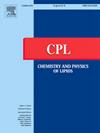Box-Behnken design optimized silibinin loaded glycerylmonooleate nanoliquid crystal for brain targeting
Abstract
Silibinin (SIL) is a neuroprotective and amyloid aggregate inhibitor that showed therapeutic applications in preclinical studies of Alzheimer’s disease (AD). Due to poor aqueous solubility free SIL is unable to reach the brain after oral administration. Therefore SIL was encapsulated in nano-liquid crystals (NLCs) to increase payload in brain using glyceryl monooleate (GMO). The NLCs were prepared through the emulsification and probe sonication method. The optimization of SIL-NLCs was done using Box-Behnken design (BBD). BBD investigated the effect of independent variable such as GMO weight, pluronics-127 (PF-127) concentration, and sonication time on critical quality attributes such as particle size and percentage drug loading (%DL) for enhancement of drug availability at targeted site. The particle size of SIL-NLCs optimized by BBD was found to be 113.2 ± 3.3 nm particle size and 8.02 ± 0.4% DL. The FTIR and DSC characterization of SIL-NLCs showed SIL is dispersed in the GMO matrix in the amorphous form. TEM analysis confirmed the cubical and crystal-like shape of the NLCs having particle size less than 150 nm. After single oral gavage of a 30 mg/kg dosage of SIL in Wistar rats, the pharmacokinetic investigations revealed that the amount of SIL available in plasma of animals administered with NLCs showed AUC0-∞ = 19.61 µg mL−1 h compared to free SIL group having AUC0-∞ = 6.72 µg mL−1 h (P > 0.005). Brain uptake studies showed SIL-NLCs treated groups have 2.25 µg/g availability of SIL compared to 10.02 µg/g for the free SIL group. The outcomes of this investigation are promising in terms of potential use of SIL-NLCs in further studies as well as using SIL for the treatment of AD.

 求助内容:
求助内容: 应助结果提醒方式:
应助结果提醒方式:


